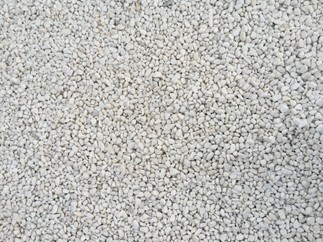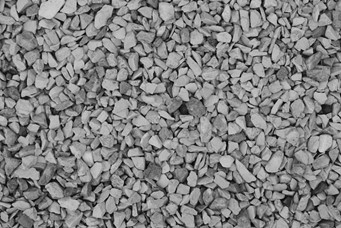
From small-sized pea gravel to massively load-bearing utility gravel, stone aggregate mix comes in all shapes, sizes, and colors. But unbeknownst to many, laying this attractive yet hardy material is more than an aesthetic choice; it’s essential to crafting long-lasting, functional spaces.
Tresca Brothers Concrete offers a trifecta of allure: affordability, versatility, and quality products. These attributes give customers and their outdoor areas a plethora of benefits, all of which are detailed below.
Drainage
Any landscape plan needs to deal with drainage. While there are many ways to sort out the problem, laying gravel is one of the most popular. Offering quick relief from snowmelt or rainfall, the material can divert and absorb water better to prevent pooling better than other solutions.
But it isn’t just effective — it’s relatively quick to implement, too.
Landscapers often use gravel to create a swale, a gentle trench sloping away from a building’s foundation, to stop water from collecting near or in the property. Once the trench is in place, they fill it with river rock, lining the edges with pea gravel to create an attractive yet effective water diverter.
Often, homeowners use it for their patios or walkways to ensure puddles never linger, regardless of the conditions.
Maintenance Reduction
As soon as it’s in position, gravel requires next to no maintenance to retain its effectiveness or aesthetic appeal. And that’s all down to the natural finish of the rocks. Weeding is perhaps the only chore, but even that’s diminished with proper underlay or weed control sprays.
Erosion Control
A catastrophic mudslide isn’t the only sign of erosion. Soil wears away naturally, and humans do a great job of speeding it by general day-to-day walking, overwatering plants, and digging.
The beginnings of erosion gullies aren’t just unsightly. In fact, their unattractiveness is their best quality — if left uncared for, they become dangerous. Unchecked water runs in sloped yards, washing the topsoil away, uprooting trees and plants, and transferring fertilizers to the water supply or aquafer.
So, it’s a gardeners’ job to limit this destruction as much as possible. Fortunately, strategic gravel placement can take control of this water barrage.
On sloped landscapes, gravel provides a barrier that stops soil from drifting away. Landscapers often apply low fencing, brick edging, or plants to help the gravel stay in place. Any water making its way down the slope comes into contact with the barrier and slowly seeps into the soil, rather than rushing away.

Drought Resistance
Gravel’s drought resistance sits on the other end of the spectrum to drainage and erosion control, making it a good option for those in arid, dry climates, too.
Where rainfall is scarce, landscapers use this low-maintenance material on flower beds to increase the likelihood of plants always having a water source.
Low Maintenance and Durable
Most materials are either long-lasting or they’re minimal maintenance, but gravel is both. People don’t have to work hard to ensure their freshly laid gravel looks pristine and retains its function years after adding it to their spaces.

